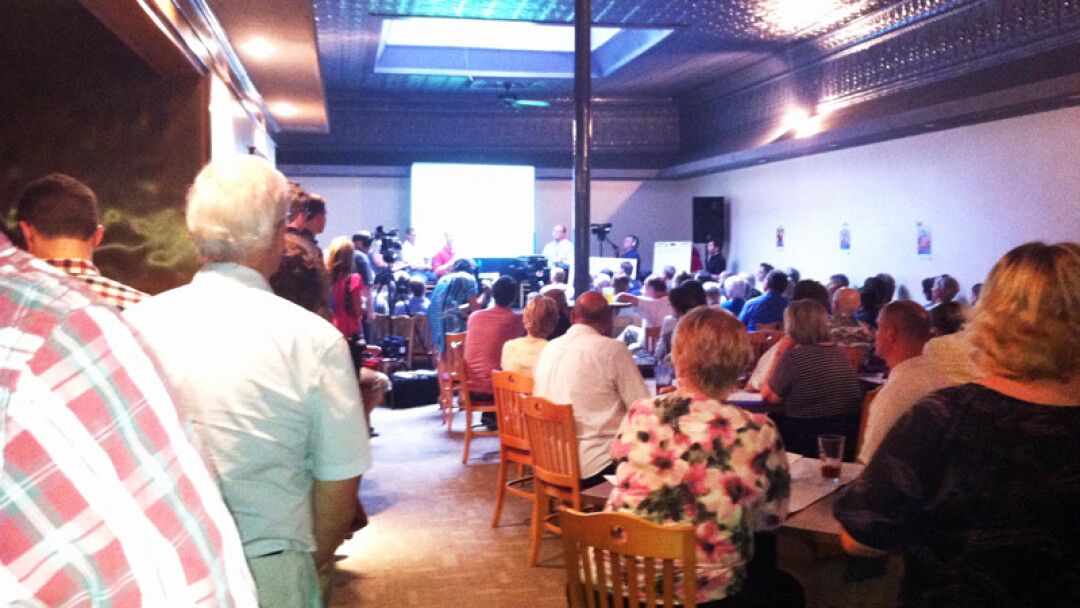Confluence Project Idea Lounge: The Recap
Thom Fountain, Kinzy Janssen |

Just hearing of the Confluence Project? You better catch up here first.
There was a packed house at Pizza Plus last night (July 25) for an installment of the Idea Lounge series that focused on the impact the Confluence Project will have on S. Barstow street.
The event began with some background from Vicki Hoehn, chair of Clear Vision Eau Claire, followed with a presentation by Mike Rindo of UW-Eau Claire, Ben Richgruber of the Eau Claire Regional Arts Center, and Stuart Schaefer of Commonweal Development. Nothing too new was brought up, though the designs of the multipurpose space were fleshed out a bit, showing both black-and-white and colorized versions of what the street-access portion could look like.
Next came the 'ideas' portion of the lounge, where the floor was opened for questions and comments on S. Barstow's fate.
Plenty of ideas and opinions were brought up, with a few more people in support of replacing the buildings but overall it was a pretty balanced room.
A New History
Those who wanted the buildings replaced by the new Confluence Project reiterated the point that the current structures are in rough shape. Schaefer stressed that many of the buildings were built on sandstone and sawdust and would not last much longer and that new buildings could create a new history for the city, one that would last for generations. He also called the current configuration (with buildings ultra-close to the road) a dangerous "pinch point" which restricts pedestrian access to the river and hinders traffic and pedestrian circulation.
Maintaining Our History
The dissenting opinion seeks to preserve the 150-year-old historical district, which lists at least 10 significant buildings on the National Register. A few long-time Eau Claire citizens and business owners voiced concern over losing the architecture and character of the area and posed solutions such as harvesting materials from the facades, a technique Schaefer admitted they'd thought of but later dropped because of its physical near-impossibility.
One point of agreement was that, if the buildings are taken down, the new design should borrow from the historic nature of the buildings currently in the area. Schaefer reassured the crowd that in interviewing architects for the project they've made that a priority.






















